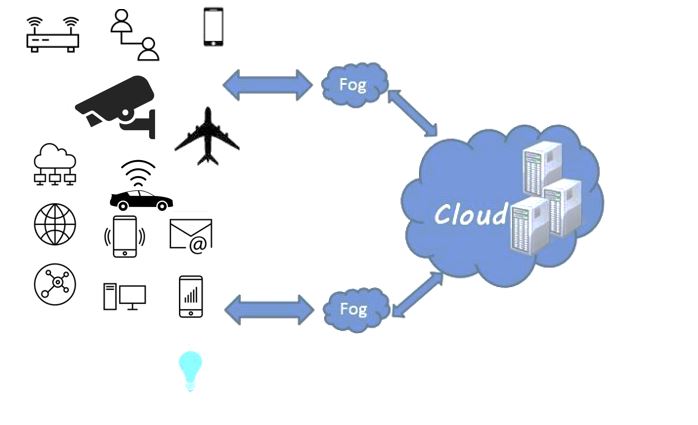Fog computing is a distributed collaboration architecture that manages the most effective locations for the specific data sources and services between the actual data source and the cloud. This type of computing is effectively extending cloud computing capabilities and services to the boundaries of the network, leveraging its strengths and capabilities to the point where data can be executed and operated.
The main goal of fog computing is to improve efficiency and to resolve the network traffic jam that may occur when transmitting to the cloud for calculation and storage. It is usually designed to increase the efficiency of the entire cloud program, but it can also be used to improve security and compliance.
How does the fog computing work?
Devices that generate or even collect data do not have the computing power and storage resources to perform various advanced analytical calculations and machine learning tasks. Therefore, fog can work because it operates at the edge of the network and in a sense is closer to the cloud.
Cloud servers have all the features needed to compute these projects, but they are often too far away to help in time. Because fog makes the endpoints closer, it can bring good results. In a foggy environment, all processing is usually done in a specific smart device or in a specific gateway. Therefore, all data sent to the cloud is effectively reduced.
Fog calculations and the Internet of Things
Since cloud computing is not feasible for IoT devices, it is necessary to replace them with fog computing.
It provides better overall distribution capabilities and ultimately meets the needs of the Internet of Things. It handles the resulting data size of these devices, making it an ideal way to handle them. Since fog calculations can effectively reduce the amount of bandwidth required and reduce the round-trip communication required between the cloud and various sensors, it can help to concatenate everything together without reducing the overall performance of the program or device.
Especially when you are considering IoT devices, this is an advantage that fog computing can provide. Because these devices are very resource intensive and demanding, they are the primary devices that use fog calculations. While latency can have a negative impact on some applications, it’s usually a good choice for these complex tasks and programs.

Related Posts
Connect & Manage AWS lightsail Windows server using WAC
Install Azure CLI on Windows 11 or 10 using Powershell or CMD
Top 8 technology buzzwords that you should know in 2023
What is Open source IoT stack?
Top 10 Free Open Source Blogging Platforms or CMS in 2023
6 Best Open source Personal Cloud Software to Setup Cloud storage